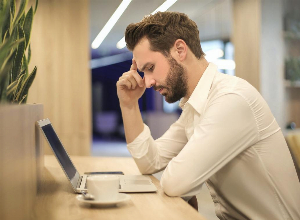Self-hypnosis: how to do it and why
Published Nov 11, 2023 • By Candice Salomé
Self-hypnosis is a technique for entering a modified state of consciousness in order to relax and benefit from the powers of change our subconscious has.
So what is the point of self-hypnosis? What are its benefits? When should your perform it? And how should you do it correctly?
We explain it all in our article!

What is self-hypnosis?
Self-hypnosis is the act of hypnotizing yourself, without being accompanied or guided by a professional.
The American psychiatrist Milton Erickson made it possible to democratize hypnosis, which is why the hypnosis we know is often called "Ericksonian hypnosis".
Self-hypnosis is an advanced relaxation, or meditation technique. Although there are significant differences, the concepts are similar. It's all about connecting with your inner self, relaxing and listening to your body.
Its primary aim is to modify certain thought patterns imprinted in our unconscious, which cannot be changed by our conscious, since the conscious and unconscious cannot communicate.
Self-hypnosis, like ordinary hypnosis, uses visualizations and suggestions to help you deal with certain ailments, such as:
- pain,
- anxiety
- sleep disorders
- depression
- phobias,
- post-traumatic stress disorder, etc.
Why perform self-hypnosis?
Our brain operates on two levels: the conscious level, located in the left hemisphere, and the unconscious level, situated in the right hemisphere. Under normal circumstances, the former takes precedence over the latter, generating rational and analytical thoughts. The aim of hypnosis, or self-hypnosis, is to temporarily disconnect the left hemisphere, in order to access the unconscious and control what happens there.
Our unconscious always wishes us well, it protects us. Communicating with the unconscious can take time, as it needs to connect with our conscious mind and understand that the changes we want to make are for our own good and that we need them.
To communicate with the unconscious, we need to go into a state of trance. This state can be reached any time we are about to lose our train of thoughts. For example, when we are lulled by music or the noise of the car. At such times, we let go of our conscious mind: we seem to be thinking about lots of things and nothing at the same time. This is a trance-like state.
How to perform self-hypnosis?
To perform self-hypnosis without stress, you will need to isolate yourself, switch off your telephone, close your windows and draw your curtains. The conditions are more or less the same as when you meditate.
The ideal time to perform self-hypnosis is in the morning or at bedtime, when you are relaxed and a bit sleepy. This way, your consciousness will offer less resistance.
Sit down, close your eyes and breathe through your stomach while relaxing your muscles.
You will realize that you are gradually entering a trance state, which will make you receptive to positive suggestions, when you start feeling very relaxed, start yawning regularly and feeling unusual sensations in your limbs. Reaching this state comes with practice, so don't hesitate to do it regularly.
The positive suggestions you make to your subconscious during your session will be integrated by the brain when you wake up. They should be kept simple, in clear language, without negation and in the second person singular.
For example, if your aim is to stop smoking, during the session, repeat to yourself "When you light your cigarette, the taste is unpleasant, it disgusts you and you put the cigarette out". Try to visualize the cigarette and the fact that you are putting it out. Feel the taste in your mouth and associate it with the words.
After several sessions of self-hypnosis, you will automatically put out your cigarette, without even really realizing it.
Performing self-hypnosis requires good self-knowledge and a certain degree of self-control. It is advisable to begin by having a few sessions with a hypnotherapist in order to familiarize yourself with the technique. You can then continue working by yourself at home.
Take care!
1 comment
You will also like

Spoon theory: What is it and how can it help people living with chronic illness?
Apr 13, 2022 • 7 comments

What is the psychological impact of chronic pain? Carenity members share their experience!
May 27, 2021 • 8 comments

 Facebook
Facebook Twitter
Twitter
